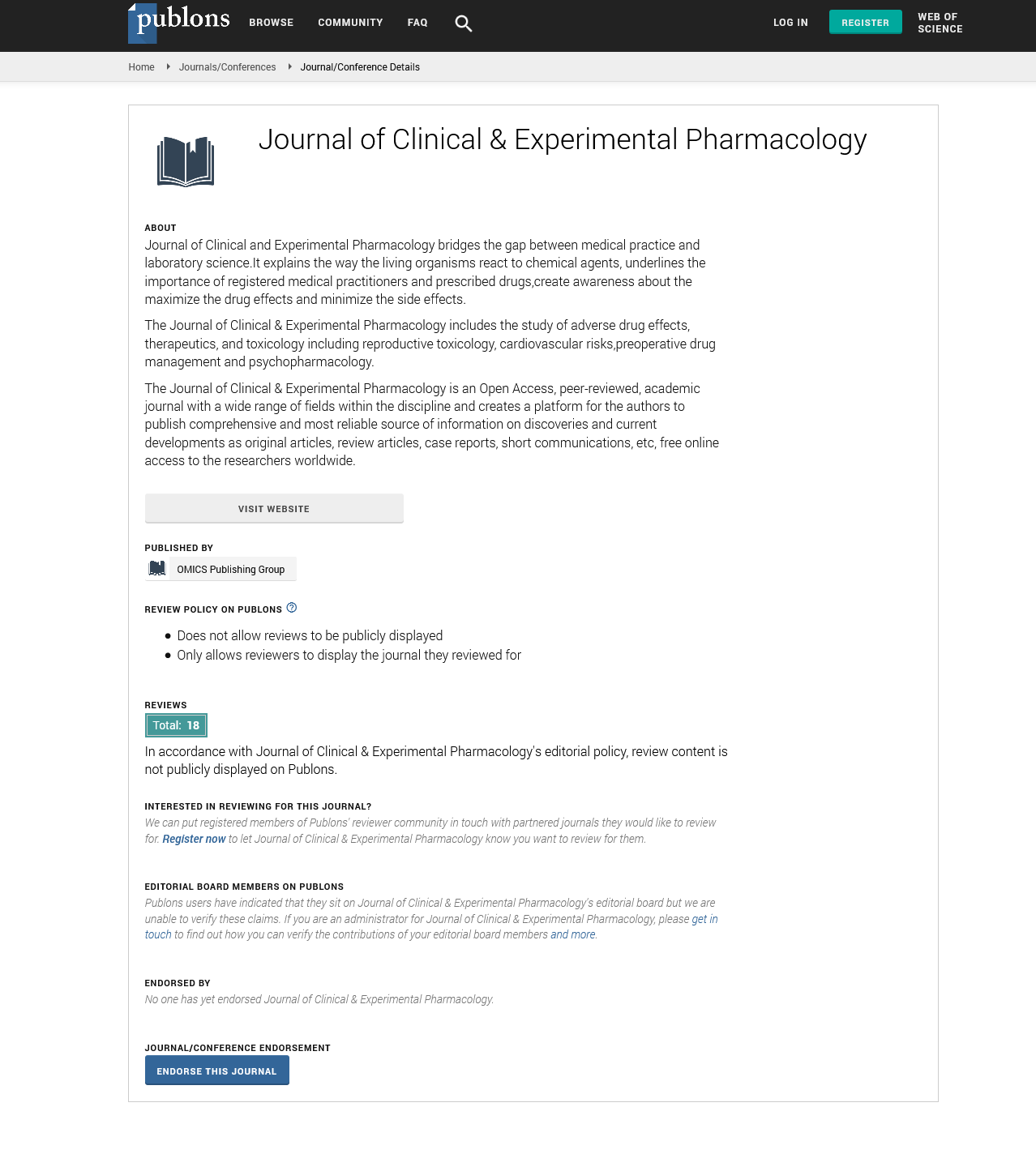Indexed In
- Open J Gate
- Genamics JournalSeek
- China National Knowledge Infrastructure (CNKI)
- Ulrich's Periodicals Directory
- RefSeek
- Hamdard University
- EBSCO A-Z
- OCLC- WorldCat
- Publons
- Google Scholar
Useful Links
Share This Page
Journal Flyer

Open Access Journals
- Agri and Aquaculture
- Biochemistry
- Bioinformatics & Systems Biology
- Business & Management
- Chemistry
- Clinical Sciences
- Engineering
- Food & Nutrition
- General Science
- Genetics & Molecular Biology
- Immunology & Microbiology
- Medical Sciences
- Neuroscience & Psychology
- Nursing & Health Care
- Pharmaceutical Sciences
L312, a novel PPAR? ligand, with potent anti-diabetic activity by selective regulation
World Congress on Pharmacology
July 20-22, 2015 Brisbane, Australia
Wang Lili, Xie Xinni, Chen Wei, Long Long, Zhou Xinbo and Li Song
Posters-Accepted Abstracts: Clin Exp Pharmacol
Abstract:
Insulin resistance plays important roles during the initiation and pathogenesis of the disease. Thus, treatment of T2DM targeted on insulin resistance is one of the major strategies. Unfortunately, current clinical insulin sensitizer agent thiazolidinediones (TZDs), which are validated to be potent agonist of nuclear receptor PPAR?, are beset by adverse side effects evoked by full PPAR? agonism. Aimed to develop the safe and efficient insulin sensitizer, researchers proposed the concept of selective PPAR? modulator (sPPAR?M), which is believed to retain potent insulin sensitizing activity yet minimize side effects derived from full PPAR? agonism. However, the sPPAR?M developed slowly because of the tardiness of the mechanism on the selective modulation of PPAR?. Recent studies demonstrated that liands activated PPAR? mediated insulin sensitizing effect dependent on the inhibition of CDK5 mediated phosphorylation at serine 273 of PPAR? (pSer273PPAR?) in adipose depots but independent on classical full agonism related transcriptional activity, which provides an explicit avenue to develop novel sPPAR?M. In this study, we found that a novel non-TZD compound L312 interacts with PPAR?. Evaluation of activity indicated that L312 showed equal binding affinity with pioglitazone to PPAR? but displayed a very different modulation of PPAR? activity. In db/db mice, L312 considerably improve insulin resistance and lipid variables compared to TZD, yet with reduced side effects such as weight gain and fluid retention. Molecular mechanism revealed that L312 effectively inhibited pSer273PPAR? and exerted a selective gene expression profile in epididymal WAT. In conclusion, we determined that L312 is novel sPPAR?M with potent inhibition of pSer273PPAR? and suggested that L312 may represent a novel template for designing sPPAR?M with advantages over current TZDs.

